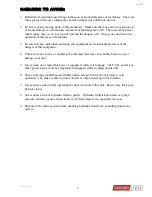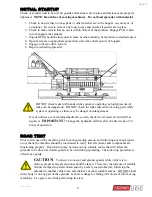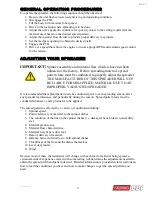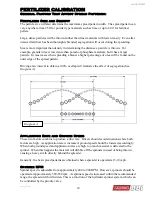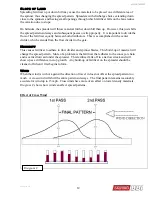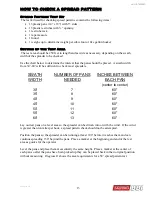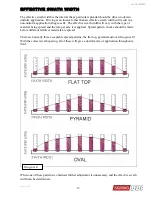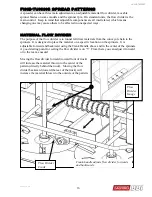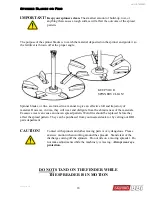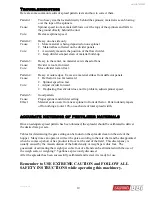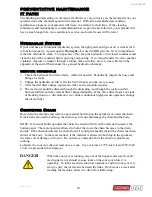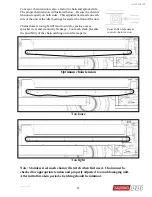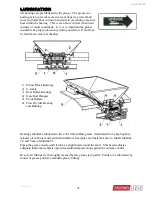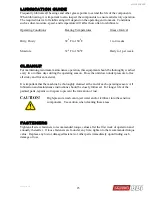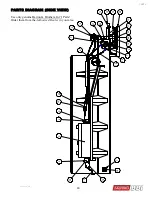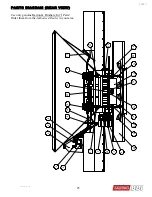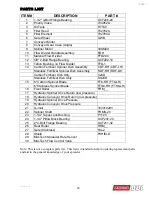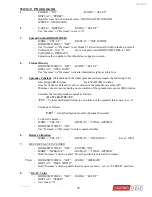
FT TRUCK MT
14
Reviewing The Spread Pattern
Select the application rate, which is common to your operation. To get a good spread pattern
check, 200-400 pounds per acre is adequate. For a single check, 25 pounds of fertilizer per 100
pounds per acre application rate will be needed. Potash can be used for the checking because it
is less expensive than other materials. Once the spreader is set to give an even distribution of
potash, other fertilizer materials such as urea and blends should be used to see if the pattern
differs.
When loading the spreader, care should be taken to place the fertilizer materials against the gate.
Fill the scale, included in the test kit, with material to be spread. Balance the scale on a nail or
knife to find the weight per cubic foot.
OR
If you do not have a hand held scale, simply weigh a 5-gallon bucket of your material and
subtract the weight of the bucket (or tare weight). Multiply this weight by 1.5 to get 7.5 gallons
of material, which is equal to 1 cubic foot.
The charts on the spreaders refers to material in “weight per cubic foot”
Determine the gate setting by using the chart on side of the spreader hopper. Note: fertilizers
usually weigh 60-65 lbs. per cubic foot and lime usually weighs approximately 90 lbs. per cubic
foot.
Begin operating the spreader 100’ before the pans. Straddle each end pan with the spreader and
drive 150’ past the pans before stopping the spreader.
Using a funnel, empty each pan into its corresponding test tube.
Numerically record the amount and plot the results on the graph paper provided with the kit.
ADJUSTMENTS
Diagram D







